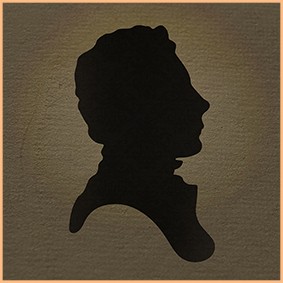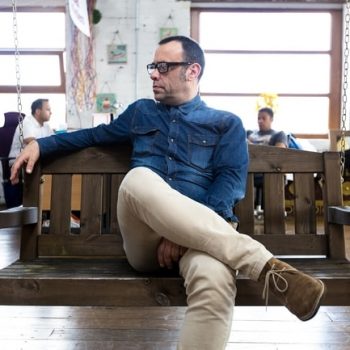DESIGN THINKING
April 24, 2017 / Category: Designing / by: Hany Farouk
Successful companies are always looking for new ways to compete in the marketplace. One approach, which has taken the corporate world by storm, is design thinking process.
Great design has that “wow” factor that makes products more desirable and services more appealing to users. This explains why McKinsey, Deloitte, IBM, Facebook and Capital One have recently bought design firms.
Great design is an outcome of design thinking, a methodology used by designers to solve complex problems and find desirable solutions for customers. Entire corporations have adopted design thinking to re-invent the way they innovate, including P&G, GE, IBM, Pepsi and SAP. The focus of innovation has shifted from being engineering-driven to design-driven, from product-centric to customer-centric, and marketing-focused to user-experience-focused.
What is design thinking?
Design thinking draws on logic, imagination, intuition and systemic reasoning to explore the possibilities of what could be, and to create desired outcomes that benefit the end user (the customer). A design mind-set is not problem-focused, it’s solution-focused, and action-oriented. It involves both analysis and imagination. Design thinking is linked to an improved future and seeks to build ideas up—unlike critical thinking, which breaks them down.
Design thinking informs human-centered innovation
Human-centered innovation begins with developing an understanding of customers’ or users’ unmet or unarticulated needs.
“The most secure source of new ideas that have true competitive advantage, and hence, higher margins, is customers’ unarticulated needs,” says Jeanne Liedtka, author of Solving Problems with Design Thinking, in an article in the Batten Review. “Customer intimacy—a deep knowledge of customers and their problems—helps to uncover those needs.”
Design thinking minimizes the uncertainty and risk of innovation by engaging customers or users through a series of prototypes to learn, test and refine concepts. Design thinkers rely on customer insights gained from real-world experiments, not just historical data or market research.
Design thinking in leadership
You don’t have to be a designer to think like one. While learning to be a good designer takes years, you can think like a designer and design the way you lead, manage, create and innovate. Design begins with setting a strategic intention. If you are mapping out a strategy, you are designing.
Design thinking requires a growth mind-set
Carol S. Dweck, a noted researcher on learning, says, “The growth mind-set—with its willingness to embrace mistakes—ultimately fosters greater creativity, innovation and achievement.”
Leaders need to create a culture that rewards risk taking and teamwork, instead of individual talent. Encourage experimentation and place small bets on new projects. Make it safe to fail early on because when you are leading people into the future you cannot predict outcomes.
Treat failure as an opportunity for learning.
The design-thinking process for innovation
There are many ways to think like a designer. When I work with clients to help them innovate, I integrate design thinking with whole-brain thinking. These practices work best with cross-functional groups to generate a diversity of ideas and perspectives. Here’s an outline of a 10-step process to use design thinking to solve problems
1. Discovery
Choose a strategic topic to focus on and learn about. Design thinking starts with an end goal, a desired future, and approaches to how you can make it happen. The topic should be one you find compelling and motivating. Research your topic for insights. What do you need to understand? What are the opportunities embedded in problems?
2. Observe
Observe users as they interact with your product, service or process. What do you see? Is there a disconnect between what someone says and what they do? Has she created shortcuts or workarounds?
3. Empathize
To create meaningful innovation you need to know your customers (internal as well as external) as real people not just users, and to care about their experiences. Ask open-ended questions such as, “What problems are they having? What does success mean to them? What do they stand to gain or lose?” Ask “why” questions to dig deeper.
4. Leverage stories to discover insights
What stories are your customers telling about their experiences? What are the hopes, fears and goals that motivate them? What insights can you draw from their problems and aspirations?
5. Frame and reframe
Shift your perspective to that of your end users or stakeholders and what they value. Framing the right problem is the only way to create the right solution. Make sense of research by seeing patterns, themes, and larger relationships between the pieces of information. Uncover customer insights to reframe problem areas into opportunities.
For example, in his book Cracking Creativity: The Secrets of Creative Genius, Michael Michalko describes how Toyota asked employees for ideas on how they could become more productive. They received few suggestions. They reframed the question to:
“How can you make your job easier?” and were inundated with ideas.
6. Ideate
Now that you have some deep insights about your customers, the most powerful question you can ask to spark creativity is “What if?” Brainstorm ideas for offerings that will deliver value to your customers. Build on ideas by asking “What else?” Ideating is more than writing on Post-it notes. When I work with clients, I engage them in activities involving diverse stimuli such as drawing, painting, storytelling and improvisation to create a lively idea-friendly atmosphere.
7. Decide
Display your ideas on a wall and ask, “What wows?” Vote for the best options based on criteria such as desirability, technical feasibility and business viability. The team can then choose one to three ideas to prototype and test. This will save you from draining everyone’s energy by debating every idea.
8. Prototype
Use prototypes to explore potential solutions. Rapid prototyping allows you to test out your ideas quickly and cheaply. Prototypes can be digital, diagrammatic or three-dimensional. The value of prototypes is in the reactions you get from users.
9. Validate your idea
Invite users to test out and respond to your prototype. How do they feel about your ideas? What feedback do they have? Their responses will inform whether you move forward or kill your idea before investing additional resources.
10. Iterate
Treat your initial ideas as stepping stones to the right solution. Design is not a linear. It is an iterative process. Use feedback to improve on your ideas and keep iterating until there is nothing more to add or subtract. Design thinking is a co-creative, collaborative process that helps people become more creative and innovative. It is especially useful in solving complex problems.










